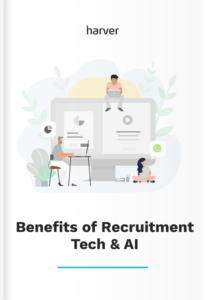In this digital age of innovation and advanced technology, people are expecting speed and efficiency when conducting everyday tasks, and this extends to applying for a job.
The introduction of auto-filled forms and ‘one click apply’ services now means that job seekers are expecting a quick and user-friendly application process from start to finish. Employers need to have their processes streamlined and work on talent engagement if they want to attract the best applicants.
Did you know that most candidates will consider abandoning their application if it takes over 15 minutes to complete?
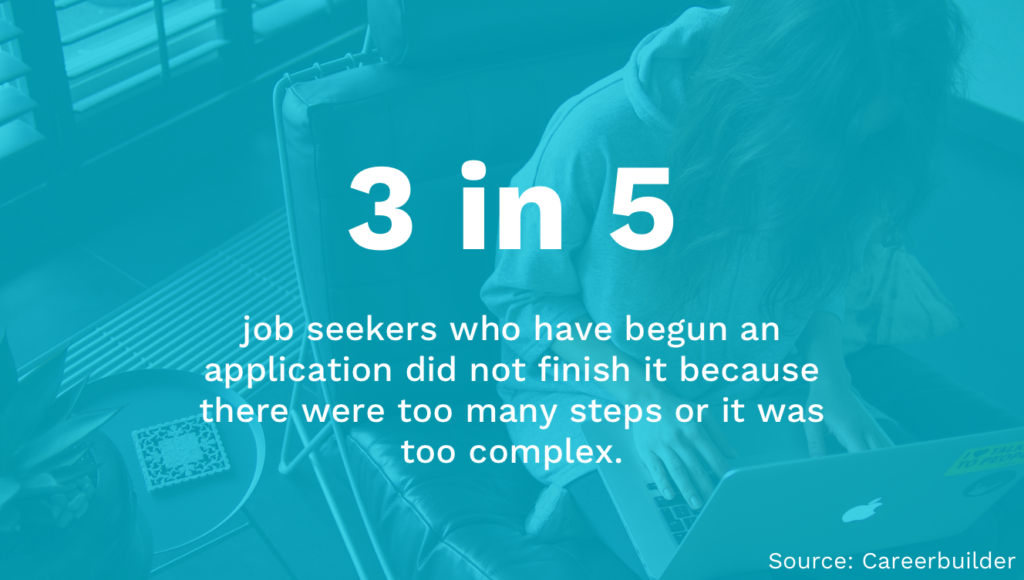
Most job seekers wish that the application process would take less than 20 minutes. Bear that in mind when building your application experience.
Keeping talent engaged is a difficult challenge at the best of times, and the advent of digital job applications has dramatically changed the recruitment market. Now, job seekers aren’t required to spend hours or potentially days on a single application, instead, they can apply to hundreds of vacancies in a single day.
This has required employers to embrace online job boards such as Indeed or TotalJobs, and to completely rethink the way in which they attract, engage and screen candidates. The solution many employers choose to adopt is typically ‘speed, speed, and more speed’.
But (and this is a big but) there is a fine line between keeping candidates engaged – and attracting the right talent. Sway too much one way and risk attracting disengaged or poorly suited candidates – sway too much the other way and risk attracting no candidates at all.
So, if you want to attract and retain the best talent, read our top tips on how to improve on the talent engagement front.
What’s in?
- Create engaging ads
- Invest in technology
- Keep candidates engaged
- Cultivate a brand community
- Develop a nurturing program
Like what you see?
Don’t miss out. Subscribe to our quarterly digest to get the latest TA and TM resources delivered right to your inbox.
1. Create engaging ads
The job advertisement is the first point of contact between you and your next potential employee, and in the competitive world of recruitment, first impressions are everything.
Creating an engaging job advertisement is more than just listing the benefits of the role. It is about communicating the central requirements and responsibilities of a role with engaging punchy content – and demonstrating your unique brand identity. Cultivating a strong brand through your job advertisements will help you stand out amongst hundreds of competing employers.
But how to do so?
Advertising on job boards will often limit the level of creativity and content you can include in your job ad. Typically, job boards only allow for text ads, so it is important to understand what kind of language is going to appeal the most to your dream candidate.
Using industry-specific terminology can act as an initial screening wall. If candidates don’t understand key terms related to the role, then they are most likely not suited to the job and will likely not apply. But using too much industry jargon can deter even the most qualified of candidates, so always find the right balance of using specific terminology and less formal engaging language.
Make sure to write inclusive job adverts and pay attention to the way you phrase things.
Get creative and be prepared to spend a little
Social media has undoubtedly shaped the digital recruitment market. According to a study conducted by Jobvite, over 90% of recruiters use social media to advertise jobs. There are several key benefits of having a social media recruiting strategy:
- Over 1 billion people use social media daily, this provides a huge potential audience to target.
- Social media platforms provide a great opportunity to get creative when it comes to job advertisements. You can use images, emojis, and even gifs to really grab a candidate’s attention.
- Through using paid advertisements on social media such as Facebook Ads and LinkedIn Ads, employers can target specific audiences and get their job ads in front of qualified and engaged candidates. This option will require a budget, but if managed right, the rewards will far outweigh the cost.
Verizon uses Instagram to promote its employee benefits and to boost talent engagement on social media.
2. Invest in technology
As mentioned earlier, most candidates drop off at around 15 minutes into an application. Either they completely abandon the application or disengage with the process and don’t truly demonstrate their capabilities. Now, we can probably guess what you’re thinking: ‘Well, I don’t want an employee who disengages after 15 minutes’.
It’s understandable, but the inconvenient truth is that in today’s age of instant digital gratification, even the most invested and engaged job seekers succumb to the easier option. However, before you let the panic set in, there is good news. The very thing that has made recruitment so competitive is also the thing that can help you succeed on the talent engagement front.
Digital technology has made it possible for employers to streamline and speed up their recruitment processes without compromising the screening method. With the advent of AI, recruiting software platforms can run intuitively without the need for human intervention.
Different platforms can serve different functions, but here are the main functions that many recruitment software programs allow you to do: • Automatically screen hundreds of resumes.
- Asses candidates based on their responses to specific questions.
- Manage a central CRM system.
- Store huge data sets including candidate information, resumes and application statuses.
The current recruiting technology market is competitive, as well as innovative. This is good news for employers, as recruitment systems will continue to improve, and cost will likely decrease.
How AI & recruitment technology is changing recruiting experience
Find out how tech has helped other companies grow by enhancing both the recruiters’ and candidates’ experience!
3. Keep candidates engaged
This is where most employers fail. When asked, a large majority of candidates and employees list feeling valued as a major component of workplace satisfaction. Keeping your candidates engaged throughout the application process can significantly improve intake levels, make your candidates feel valued and differentiate your company from all the other competing employers.
How to keep candidates engaged?
There is an almost endless list of engagement methods companies can employ to keep candidates engaged. The most common engagement methods that can be easily implemented within your recruitment strategy are:
- Keeping candidates in the loop about your company’s latest news.
- Sending regular updates about the candidate’s application status.
- Inviting candidates to open days or company events.
- Creating a more relaxed and personable interview environment/process.
- Human engagement such as phone calls and emails.
Keeping candidates engaged can be especially important for companies whose recruitment process is lengthier. Some employers choose for longer recruitment processes and have several interview stages for different reasons. For some employers it is a legal requirement to conduct rigorous screening processes, for others, they simply want to ensure the candidate is the best possible person for the job.
If this sounds like your company then always remember – if you have candidates jumping through hoops and offer nothing in return for their efforts, they will most likely disengage with the entire process. Keep them engaged, make them feel valued and they will have little reason to look elsewhere.
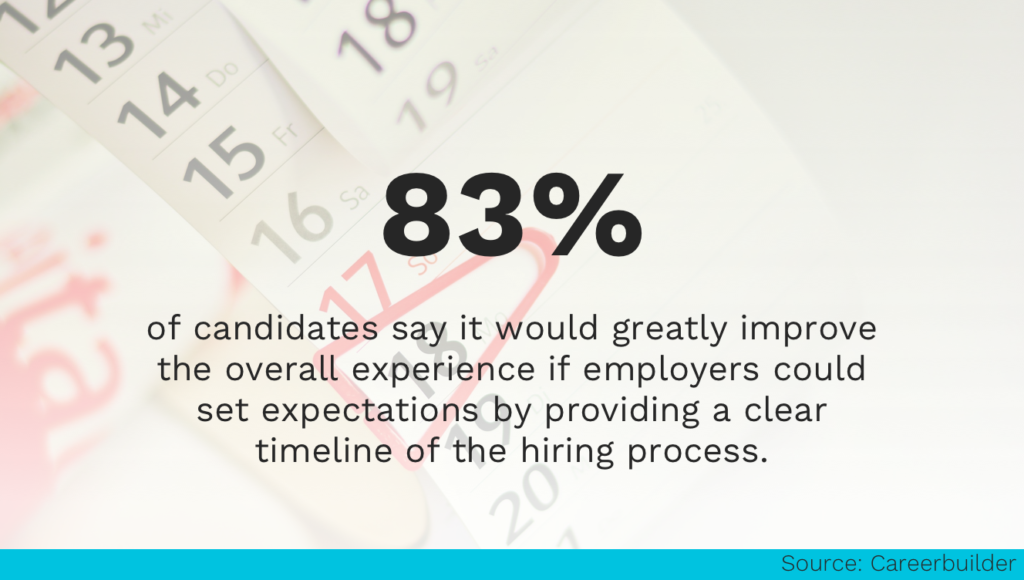
Informing your candidates about how long the stages of the hiring process will be improves candidate experience and engagement.
4. Cultivate a brand community
The majority of job seekers now conduct their own research into potential employers. With employer review sites such as Glassdoor offering in-depth personal reviews on employers, your company needs to ensure it is making its staff happy. This will have a positive effect on talent engagement. One of the most effective ways to do this is to cultivate a strong brand community.
What is a brand community?
A brand community can be described as a network of people who are invested enough into a brand that they advocate that brand to other individuals – therefore growing the brand community. The people that make up the community (in this case employees) are engaged with the brand to such a level that they are willing to recommend that brand or place of work to other people/potential candidates.
What are the benefits of a brand community?
With an engaged brand community, companies can make huge savings on marketing efforts as its community essentially facilitates the marketing. Their recommendations are natural and don’t typically require incentives. As a result, your company can increase its brand exposure without spending huge sums of money on branding and marketing campaigns.
How do you create a brand community?
Creating a dedicated brand community is all about engaging with your potential network of advocates. In this case, it means engaging with your employees, more importantly giving them a voice in how the company engages with its employees.
Then, allow for the community to grow through engaging with each other. This can be done at events, company outings and trainings, or online through social media or employee community platforms.
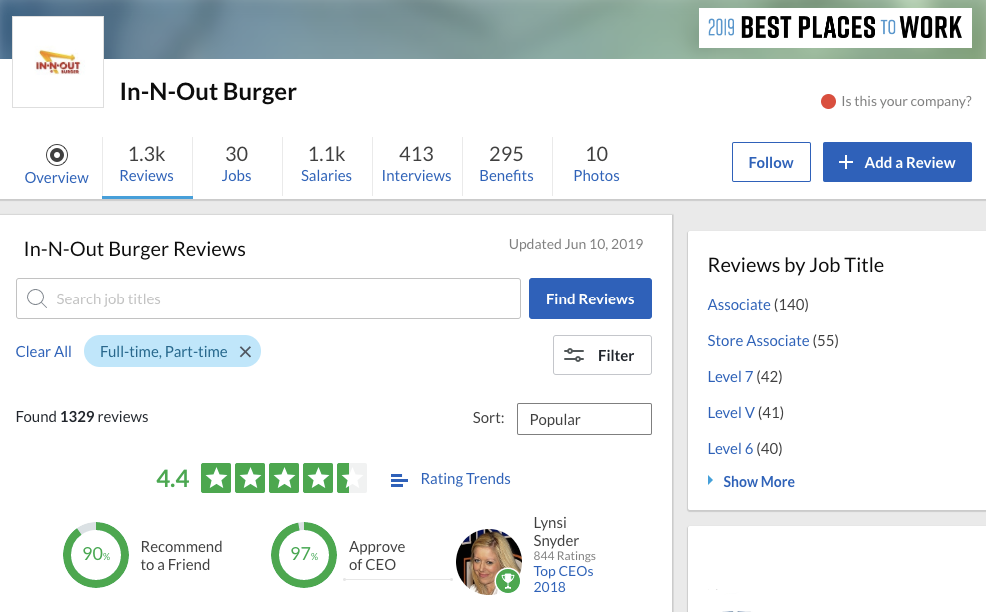
In-N-Out Burger is doing a great job building a brand community of employees. The company has earned a place on the 2019 Best Places to Work list and 90% of its employees would recommend the company to a friend. Cultivating your brand community will help you improve talent engagement and boost employee referrals.
5. Develop a nurturing program
Congratulations! You’ve hired the perfect candidate, but what comes next? According to a study carried out in 2017, one in five employees leave during their probationary period. The probationary period can be a difficult experience for many new employees – meeting new colleagues, learning different practices and fitting into the company culture can be overwhelming.
This is why you should nurture every new employee who walks through the door and invest time, effort and support into their development and wellbeing. A growing number of employers are investing a significant amount of resources in ensuring the mental wellbeing of their employers. A happy workforce is a productive workforce.
The level of nurturing each new employee is often subject to a number of factors, often including the candidate’s age, level of experience, the company culture, size and role. But every individual will benefit from some form of nurturing or support. If they are new to the role, training and support could be crucial for their development. If they are experienced in the role, they might benefit from introductions to colleagues to help them grow their confidence.
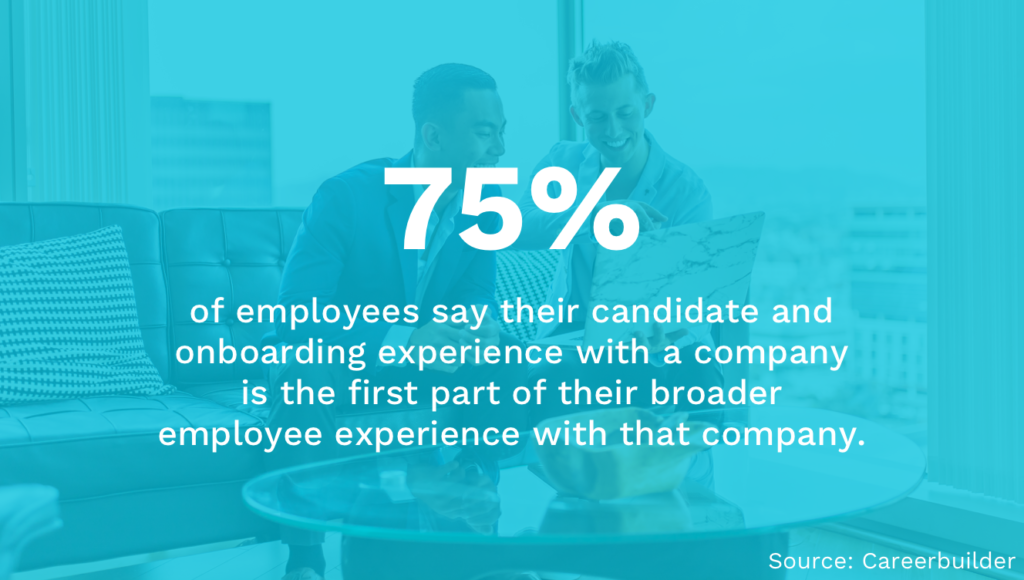
Candidate experience is inextricably connected to employee experience and talent engagement. Providing a great candidate experience is your unique chance to build an engaged workforce.
How to implement a successful nurturing program?
It might seem like a lot of work, nurturing every new employee on a level that is most beneficial for them as an individual. But there are ways to implement an effective employee nurturing program into your company’s operations.
1. Give managers ownership of their teams
Many companies fall into the trap of holding power too close to the top and not giving enough responsibility to the managers. Anybody in a managerial position has proven their worth to the company and should possess communicational and leadership skills. Managers also know their employees better than other senior members of staff. This means that they can identify what the individual needs and what type of nurturing/support would be best in order to help them develop.
2. Implement a dedicated nurturing and wellbeing team
This is a growing trend among companies across the world, from global corporations to regional start-ups. Having a dedicated and trained team of personnel who are on hand to provide new employees with expert support can have significant benefits for your retention rates. A big part of anxiety in the workplace is the feeling that there is nobody to talk to. But having a dedicated point of contact is a great way to ensure employees always have somebody to talk to and find support.
3. Create a nurturing company culture
Creating a company culture that promotes wellbeing and cooperative support will not only help you retain new employees but will cultivate a dedicated ‘hive’ of employees working together to help your company achieve its goals. This is where some of the world’s most innovative and fastest growing companies are succeeding and the good news is… it doesn’t have to be difficult or expensive to achieve. Simple things like hosting quarterly company meetings where employees at all levels can communicate with each other or bringing different departments together to solve business problems can help teams develop trust in one and other.
A final word
Finding the perfect candidate is never straightforward or easy and it will often take more than one attempt to find the right individual best suited to the role and your company. However, understanding how you can engage talent and prioritizing it in your recruitment strategy and organization will make the process of attracting, hiring and retaining the right candidates easier.
| About the Author: Nathan Baldwin is a Digital Marketing Executive at Morson International, specialising in the international recruitment industry. His role involves discovering innovations within the industry and creating relevant and engaging online discussions around them. |
How AI & recruitment technology is changing recruiting experience
Find out how tech has helped other companies grow by enhancing both the recruiters’ and candidates’ experience!

